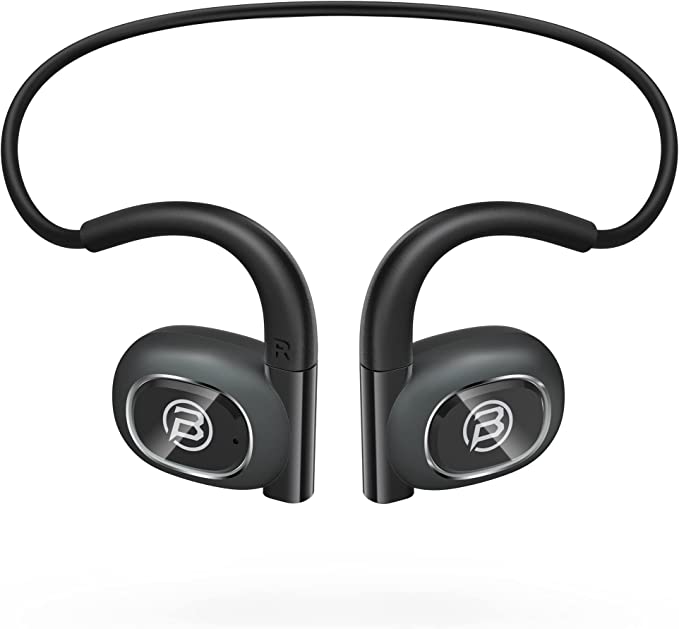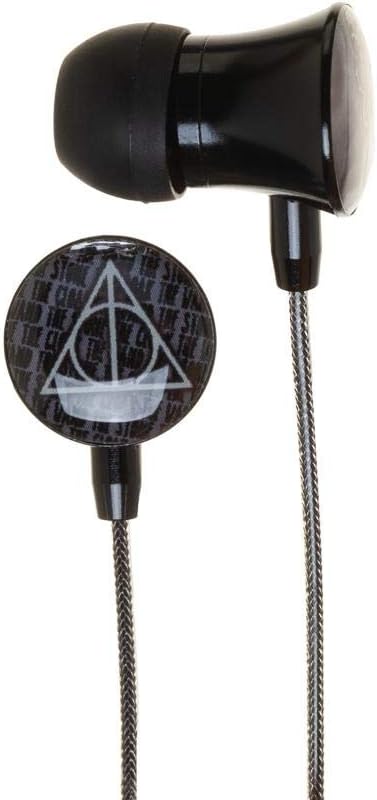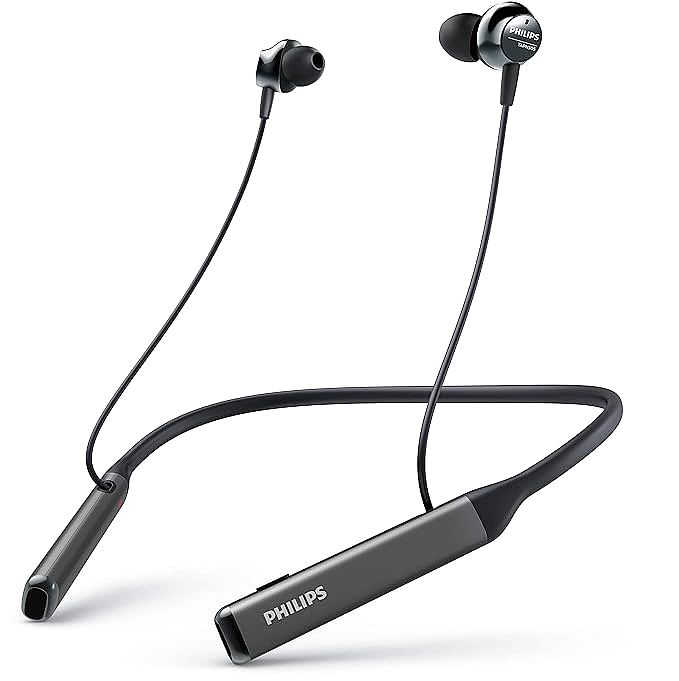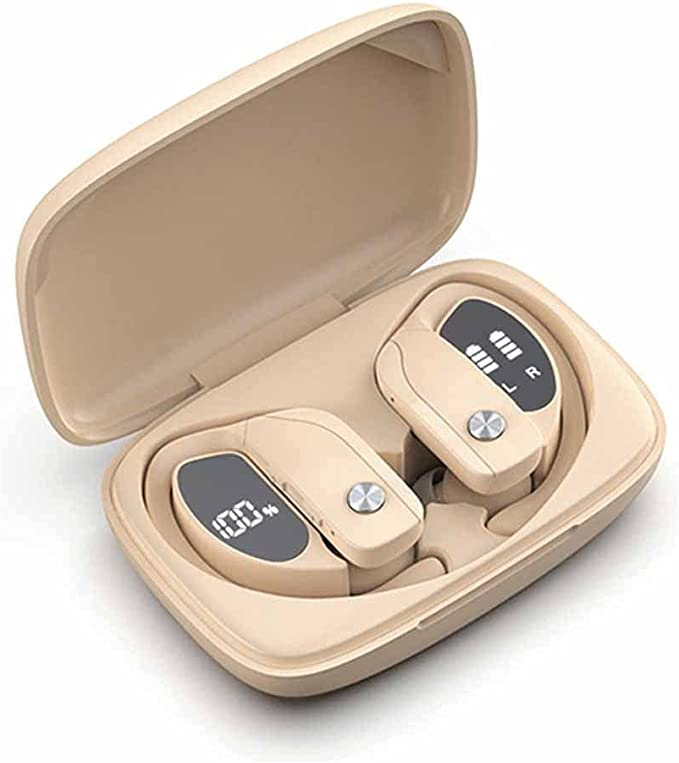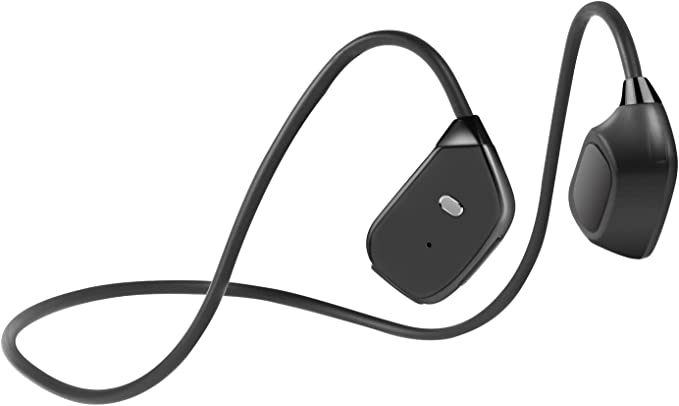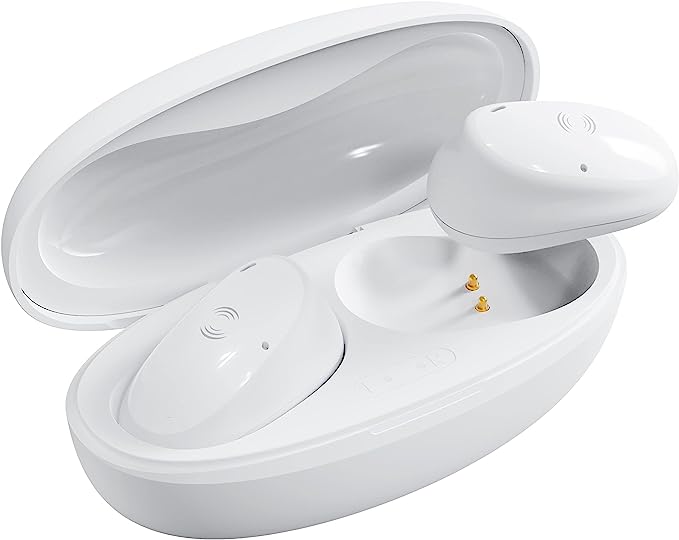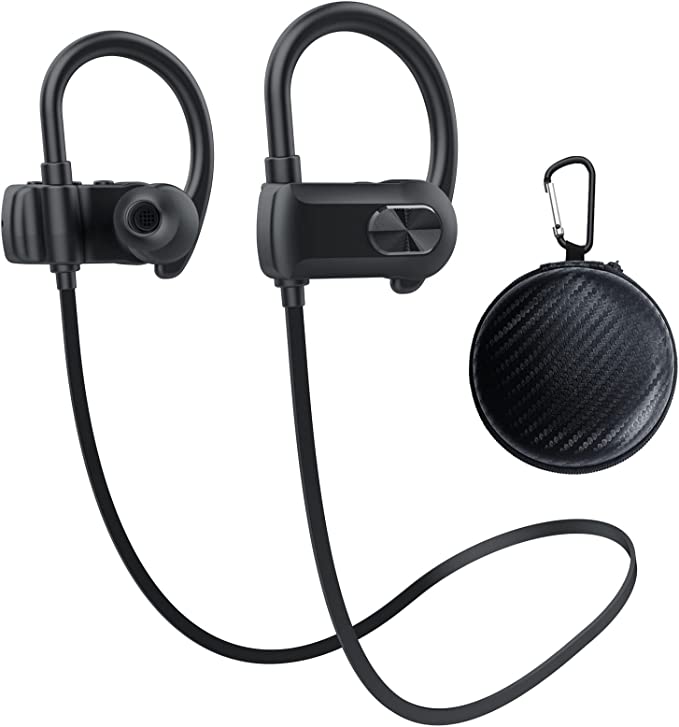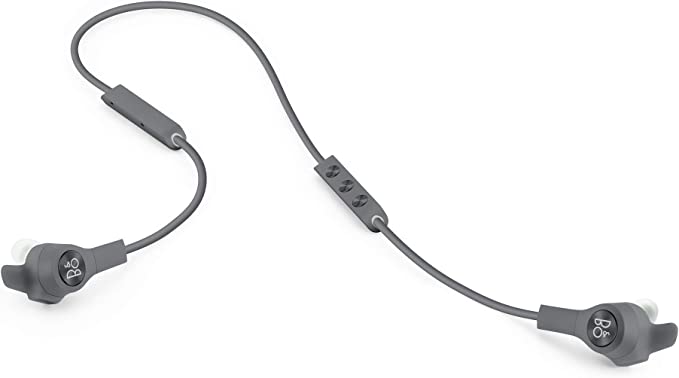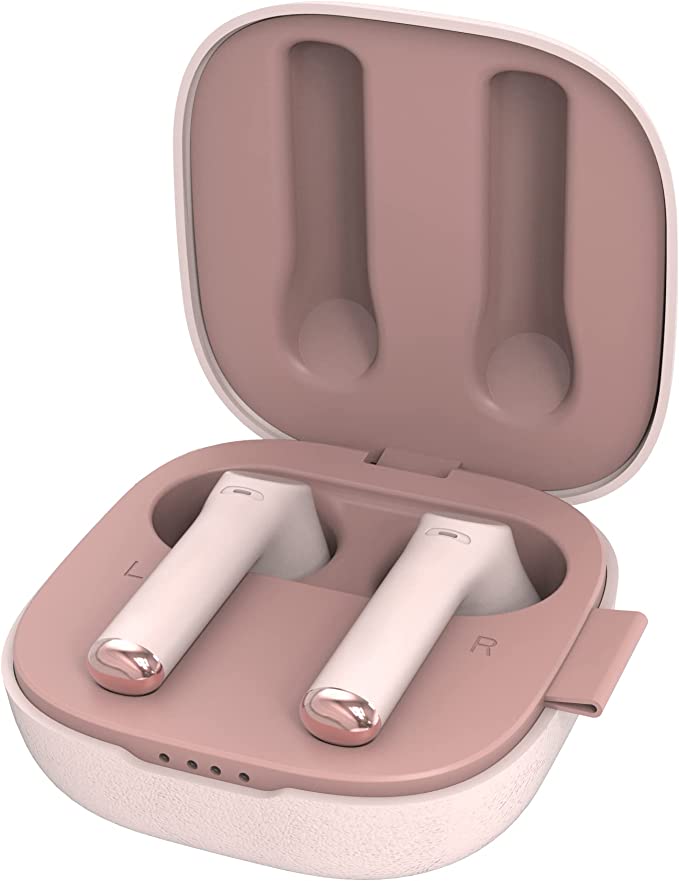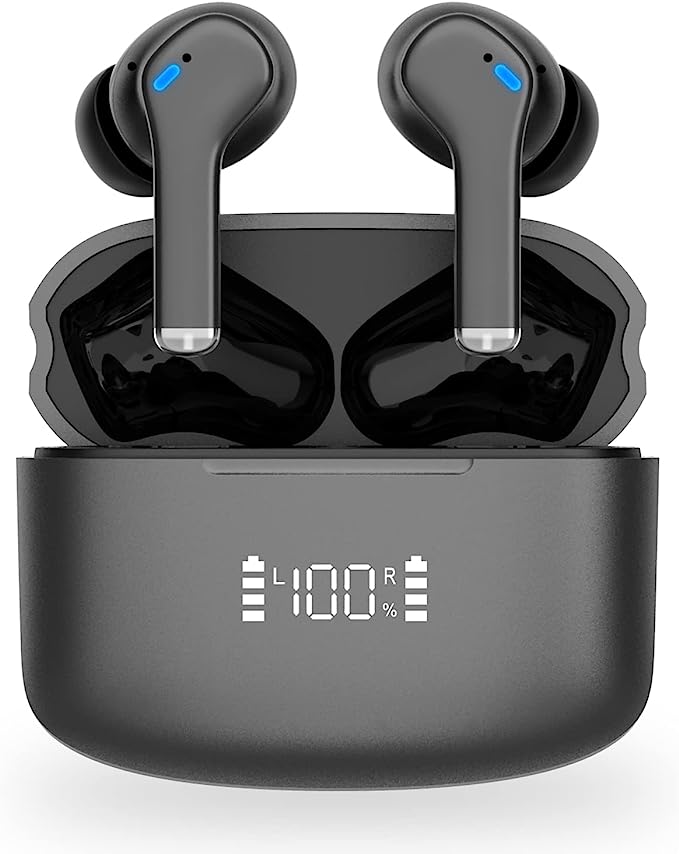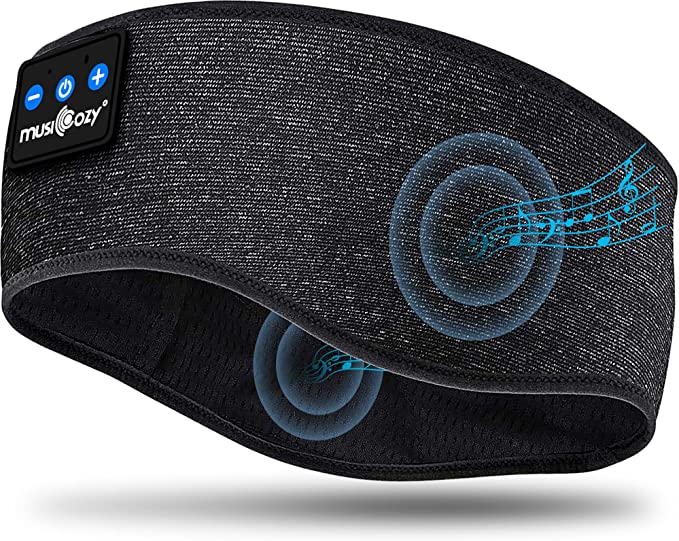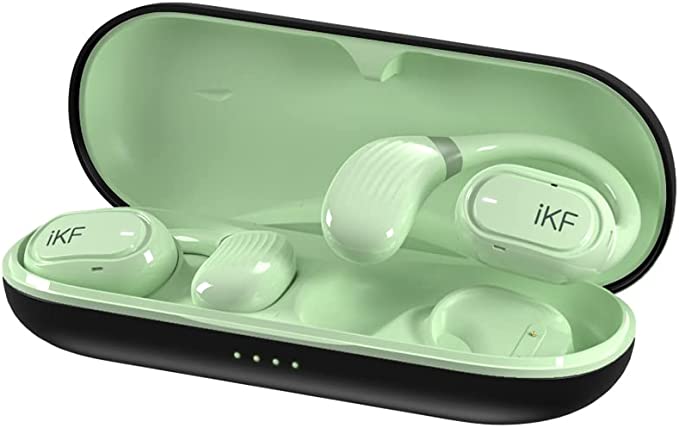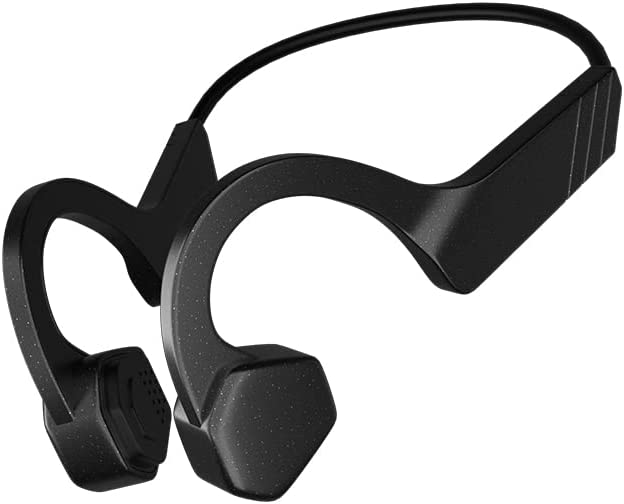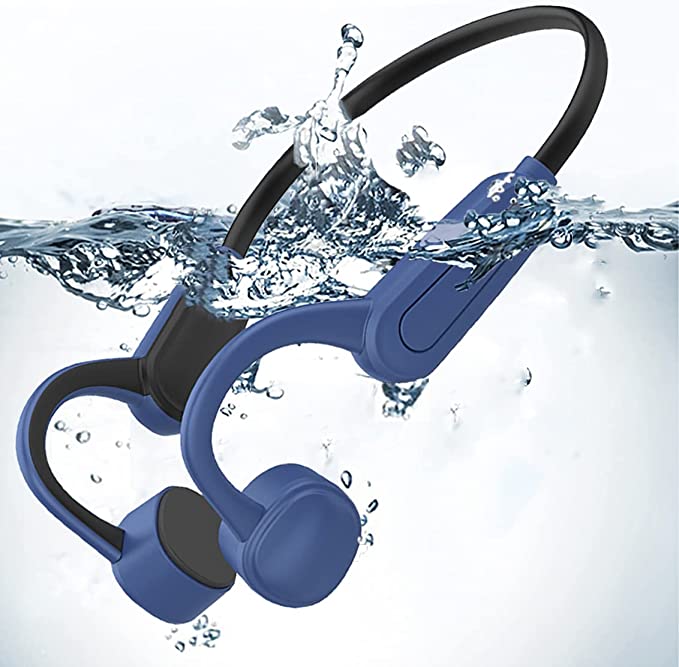Burrowse BHS-760 Wireless Earphones: Your Perfect Workout Companion with Superior Sound
Update on March 8, 2025, 4:54 a.m.
Imagine a world where music flows directly into your ears, unburdened by tangled wires. This is the reality of wireless earphones, a technology that has revolutionized how we experience audio. But this freedom didn’t appear overnight. It’s the culmination of decades of innovation, starting with early experiments in radio transmission and evolving through the development of Bluetooth technology.
In the early days of personal audio, headphones were bulky and tethered. The invention of the transistor in the mid-20th century paved the way for smaller, more portable devices, but wires remained a constant constraint. The dream of wireless listening began to take shape with the development of infrared technology, but it was Bluetooth, a short-range wireless communication protocol introduced in the late 1990s, that truly unlocked the potential of wireless earphones. Bluetooth’s ability to transmit audio data efficiently over short distances, with relatively low power consumption, made it the ideal technology for personal audio devices. The early Bluetooth earphones were still relatively large and expensive, but they represented a significant leap forward. Over time, Bluetooth technology has continued to evolve, with newer versions offering improved audio quality, lower latency, and increased energy efficiency.

Sound Without Strings: How Wireless Earphones Work
At their core, wireless earphones like the Burrowse BHS-760 rely on the same fundamental principles as traditional wired headphones: converting electrical signals into sound waves. However, the way these signals are transmitted is fundamentally different.
Wired headphones receive audio signals directly through a physical cable. Wireless earphones, on the other hand, receive these signals wirelessly, typically via Bluetooth. The process begins with your audio source (like a smartphone or computer). The source device encodes the audio signal into a digital format and transmits it wirelessly using a Bluetooth transmitter. The earphones, equipped with a Bluetooth receiver, pick up this signal.
This received digital signal is then processed by a chip within the earphones (in the BHS-760’s case, a CSR chip). This chip performs several crucial functions, including decoding the digital audio signal, converting it back into an analog electrical signal, and amplifying it. This amplified signal is then sent to the earphone’s drivers, which contain diaphragms.
The Magic of Magnetism: Convenience and Functionality
One of the immediately noticeable features of the Burrowse BHS-760 is the magnetic attraction between the earbuds. This isn’t just a gimmick; it’s a clever design feature that addresses a common frustration with earphones: storage and organization.
The magnets used in the BHS-760 are likely neodymium magnets, a type of permanent magnet known for their exceptional strength relative to their size. Neodymium magnets are made from an alloy of neodymium, iron, and boron (NdFeB). These elements are combined in a specific crystalline structure that creates a powerful magnetic field.
When the earbuds are brought close together, the magnetic fields interact, causing them to attract and snap together. This secure connection prevents the earphones from dangling freely, reducing the risk of tangling and making them easy to store around your neck when not in use. The strength of the magnetic attraction is carefully calibrated to be strong enough to hold the earbuds together securely, but not so strong that it’s difficult to separate them when you want to use them.
Fighting the Elements: Hydrophobic Nano-Coatings Explained
The Burrowse BHS-760 boasts a hydrophobic nano-coating, a feature that makes them resistant to sweat and water. But what exactly does “hydrophobic” mean, and how does a nano-coating achieve this?
“Hydrophobic” literally means “water-fearing.” Hydrophobic substances repel water, causing it to bead up and roll off rather than spreading out and being absorbed. This property is often observed in nature – think of the way water droplets form on a lotus leaf. This self-cleaning effect, known as the “lotus effect,” is due to the microscopic structure of the leaf’s surface.
Hydrophobic nano-coatings mimic this natural phenomenon. They are extremely thin layers of material, typically applied at the nanoscale (one billionth of a meter), that create a surface with very low surface energy. Surface energy is a measure of how strongly the molecules of a substance are attracted to each other. Water has a relatively high surface energy, meaning its molecules are strongly attracted to each other. When water comes into contact with a low-surface-energy material, like a hydrophobic nano-coating, the water molecules are more attracted to each other than to the surface. This causes the water to form beads, minimizing its contact with the surface and allowing it to roll off easily.
The specific materials used in hydrophobic nano-coatings can vary, but they often include substances like fluoropolymers (similar to Teflon) or silicone-based compounds. These materials are inherently hydrophobic due to their chemical structure.
The Heart of Sound: Understanding the 11mm Diaphragm
The diaphragm is the component within an earphone driver that actually vibrates to produce sound waves. It’s a thin, flexible membrane, typically cone-shaped, that moves back and forth in response to the electrical signal from the amplifier. The size of the diaphragm, often measured in millimeters (mm), is a key factor in determining the earphone’s sound characteristics.
The Burrowse BHS-760 features an 11mm diaphragm, which is relatively large for in-ear headphones. A larger diaphragm can move more air, which generally results in a more powerful sound, particularly in the lower frequencies (bass). This is because moving more air creates larger pressure variations, which we perceive as louder sound.
The relationship between diaphragm size and sound is rooted in the physics of sound waves. Sound waves are essentially vibrations that travel through a medium, like air. The frequency of these vibrations determines the pitch of the sound (high frequency = high pitch, low frequency = low pitch), while the amplitude (the size of the vibrations) determines the loudness. A larger diaphragm can create larger amplitude vibrations, especially at lower frequencies, resulting in a richer, more impactful bass response.
Smart Sound: Decoding the Role of the CSR Chip
The CSR chip in the Burrowse BHS-760 is a crucial component, though specific details about the exact model are unavailable, We can speak to commonly used function in CSR(now Qualcomm) Bluetooth audio chips. These chips are essentially miniature computers designed specifically for audio processing.
Qualcomm acquired CSR, and their combined technologies are now integrated into many Bluetooth audio devices. These chips are responsible for:
- Bluetooth Connectivity: Managing the wireless connection between the earphones and the audio source, ensuring a stable and reliable link.
- Digital-to-Analog Conversion (DAC): Converting the digital audio signal received via Bluetooth into an analog electrical signal that can drive the earphone speakers.
- Amplification: Boosting the analog signal to a level that can power the earphone drivers and produce audible sound.
- Audio Processing: Applying various algorithms to enhance the audio quality, such as equalization (EQ) to adjust the balance of different frequencies.
Clear Conversations: Delving into CVC Noise Cancellation
CVC (Clear Voice Capture) noise cancellation is a technology specifically designed to improve the clarity of voice calls in noisy environments. It’s not the same as Active Noise Cancellation (ANC), which is used to block out ambient noise for the listener. Instead, CVC focuses on reducing background noise picked up by the microphone, making your voice clearer to the person on the other end of the call.
CVC uses sophisticated algorithms to analyze the incoming audio signal from the microphone. These algorithms are trained to distinguish between speech and background noise. They identify and suppress common noise sources, such as traffic, wind, and background chatter. The specific techniques used can vary, but they often involve:
- Spectral Subtraction: This technique estimates the noise spectrum and subtracts it from the overall signal.
- Beamforming: If multiple microphones are present, beamforming can be used to focus on the direction of the speaker’s voice and suppress noise from other directions.
- Echo Cancellation: This reduces echoes that can occur during calls, particularly in hands-free environments.
The result of CVC processing is a cleaner audio signal with reduced background noise, making it easier for the person you’re talking to hear your voice clearly, even in challenging environments.
Conclusion: The Science of Sound, Simplified
The Burrowse BHS-760 wireless earphones, while seemingly simple in their function, represent a complex interplay of physics, materials science, and electrical engineering. From the magnetic attraction that keeps them conveniently together to the hydrophobic coating that protects them from the elements, and the sophisticated audio processing that delivers clear sound, every aspect of their design is rooted in scientific principles. Understanding these principles not only enhances our appreciation for the technology but also empowers us to make more informed choices as consumers. Wireless earphones are no longer just a convenience; they are a testament to human ingenuity and our ongoing quest to improve the way we experience the world around us.
